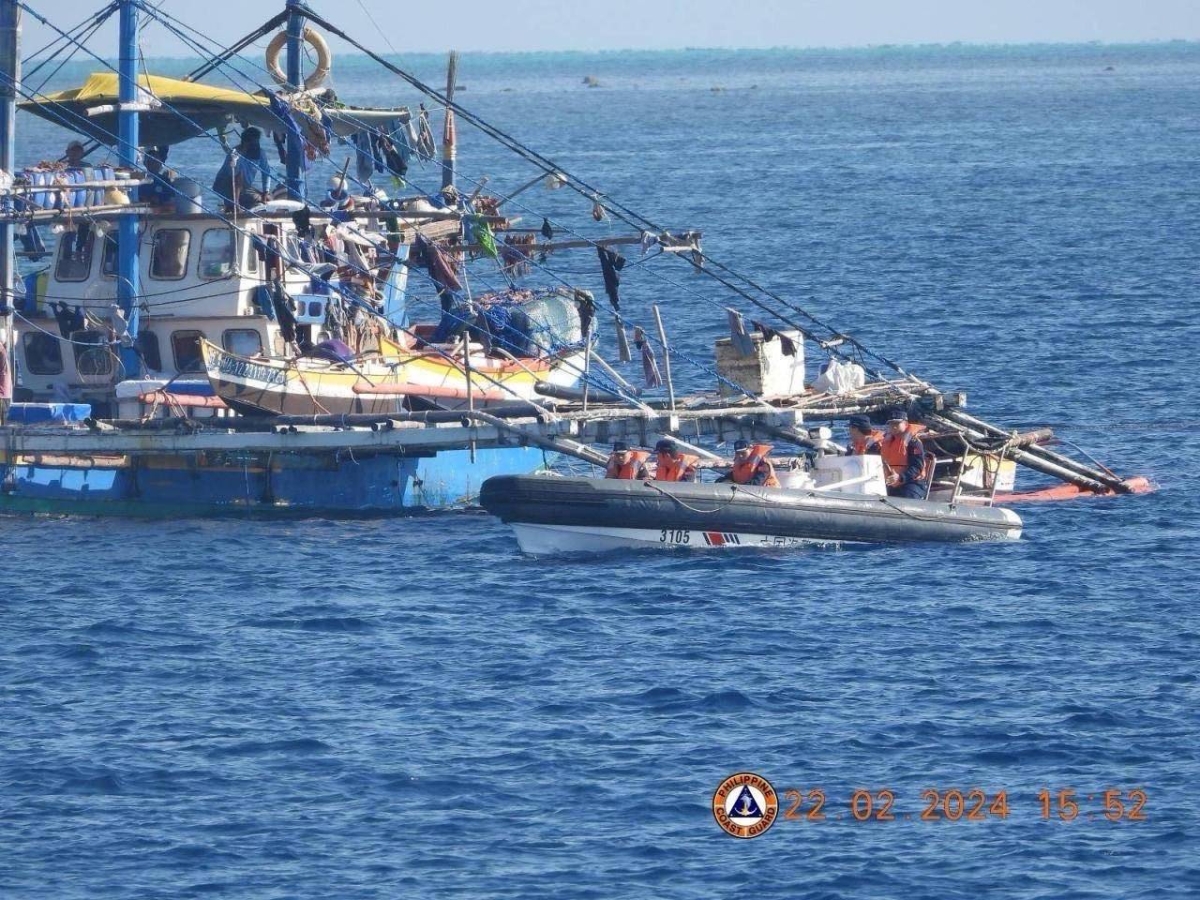In a recent development, Beijing has reinstalled a barrier at the Scarborough Shoal, also known as Bajo de Masinloc atoll, in response to what China perceives as the Philippines’ “infringement” on its sovereignty. China’s Ministry of Foreign Affairs spokesperson, Mao Ning, emphasized that Huangyan Dao (Scarborough Shoal) has always been China’s territory.
The Chinese Embassy in Manila shared the transcript of Mao’s briefing, where he stated, “In response to a series of moves by the Philippines in the waters of Huangyan Dao that infringe on China’s sovereignty, China is compelled to take necessary measures to firmly safeguard its territorial sovereignty and maritime rights and interests.”
The trigger for China’s action was the report by the Bureau of Fisheries and Aquatic Resources (BFAR) that highlighted an increase in the number of Filipino fishermen now fishing in Scarborough Shoal. The BFAR had recently provided diesel and water to support the Filipino fishermen in Bajo de Masinloc.
According to the Philippine Coast Guard, the China Coast Guard blocked the BFAR’s vessel on February 22 while it was heading to the shoal. This incident further escalated tensions in the area.
Bajo de Masinloc, which is part of the municipality of Masinloc in Zambales province, is located 124 nautical miles west of Zambales. It falls within the 200 nautical-mile exclusive economic zone and the Philippine Continental Shelf.
This recent move by China to reinstall the barrier at Scarborough Shoal raises concerns and adds to the ongoing territorial disputes in the South China Sea. The area has long been a point of contention between China and the Philippines, as well as other neighboring countries.
China’s claim over Scarborough Shoal is based on historical records, asserting that it has been part of Chinese territory for centuries. However, the Philippines disputes this claim, citing its exclusive economic zone and the United Nations Convention on the Law of the Sea (UNCLOS) as the basis for its rights over the area.
It is important to note that Scarborough Shoal is not the only area in the South China Sea where territorial disputes exist. The region is rich in natural resources and has strategic importance for trade and navigation. Several countries, including China, the Philippines, Vietnam, Malaysia, and Taiwan, have overlapping claims in the area.
The Philippines has been actively seeking international support and legal arbitration to resolve the disputes in the South China Sea. In 2016, an international tribunal ruled in favor of the Philippines, stating that China’s claims in the region were invalid under UNCLOS.
However, China has rejected the ruling and continues to assert its claims through actions such as the reinstallation of the barrier at Scarborough Shoal. This ongoing dispute has led to increased tensions in the region and has raised concerns among neighboring countries and the international community.
The situation at Scarborough Shoal highlights the complex nature of territorial disputes and the challenges in finding a peaceful resolution. The involvement of multiple countries with competing interests and historical claims makes it a sensitive issue that requires careful diplomacy and international cooperation.
Efforts to address the disputes in the South China Sea should focus on dialogue, adherence to international law, and the peaceful resolution of conflicts. It is crucial for all parties involved to work towards finding a mutually acceptable solution that respects the rights and interests of each country while ensuring stability and security in the region.
As the situation continues to evolve, it is important for the international community to closely monitor developments and support efforts towards a peaceful resolution of the territorial disputes in the South China Sea.







